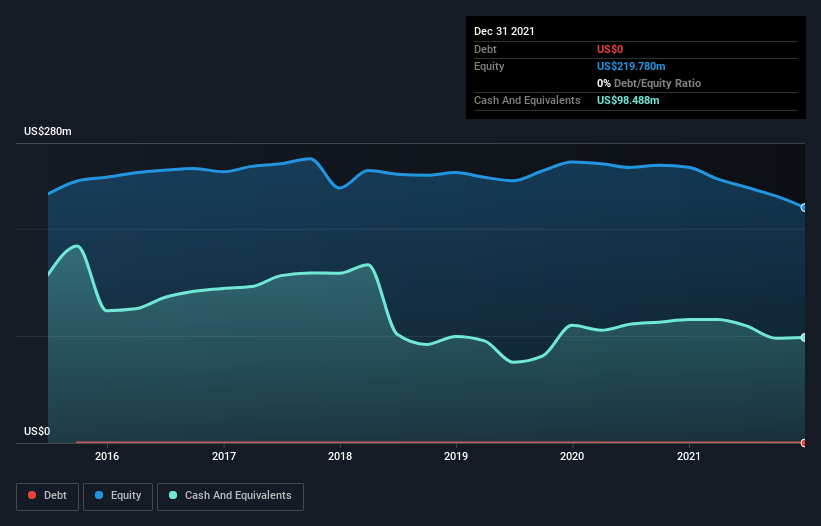We're Not Worried About OneSpan's (NASDAQ:OSPN) Cash Burn
We can readily understand why investors are attracted to unprofitable companies. For example, although software-as-a-service business Salesforce.com lost money for years while it grew recurring revenue, if you held shares since 2005, you'd have done very well indeed. Nonetheless, only a fool would ignore the risk that a loss making company burns through its cash too quickly.
Given this risk, we thought we'd take a look at whether OneSpan (NASDAQ:OSPN) shareholders should be worried about its cash burn. In this report, we will consider the company's annual negative free cash flow, henceforth referring to it as the 'cash burn'. The first step is to compare its cash burn with its cash reserves, to give us its 'cash runway'.
View our latest analysis for OneSpan
When Might OneSpan Run Out Of Money?
A company's cash runway is calculated by dividing its cash hoard by its cash burn. When OneSpan last reported its balance sheet in December 2021, it had zero debt and cash worth US$98m. In the last year, its cash burn was US$4.9m. So it had a very long cash runway of many years from December 2021. Notably, however, analysts think that OneSpan will break even (at a free cash flow level) before then. In that case, it may never reach the end of its cash runway. You can see how its cash balance has changed over time in the image below.
Is OneSpan's Revenue Growing?
We're hesitant to extrapolate on the recent trend to assess its cash burn, because OneSpan actually had positive free cash flow last year, so operating revenue growth is probably our best bet to measure, right now. In fact, operating revenue has stayed pretty steady over the last twelve months. Clearly, however, the crucial factor is whether the company will grow its business going forward. So you might want to take a peek at how much the company is expected to grow in the next few years.
How Hard Would It Be For OneSpan To Raise More Cash For Growth?
Given its problematic fall in revenue, OneSpan shareholders should consider how the company could fund its growth, if it turns out it needs more cash. Issuing new shares, or taking on debt, are the most common ways for a listed company to raise more money for its business. Commonly, a business will sell new shares in itself to raise cash and drive growth. By looking at a company's cash burn relative to its market capitalisation, we gain insight on how much shareholders would be diluted if the company needed to raise enough cash to cover another year's cash burn.
OneSpan has a market capitalisation of US$609m and burnt through US$4.9m last year, which is 0.8% of the company's market value. That means it could easily issue a few shares to fund more growth, and might well be in a position to borrow cheaply.
How Risky Is OneSpan's Cash Burn Situation?
As you can probably tell by now, we're not too worried about OneSpan's cash burn. For example, we think its cash runway suggests that the company is on a good path. While its falling revenue wasn't great, the other factors mentioned in this article more than make up for weakness on that measure. There's no doubt that shareholders can take a lot of heart from the fact that analysts are forecasting it will reach breakeven before too long. After considering a range of factors in this article, we're pretty relaxed about its cash burn, since the company seems to be in a good position to continue to fund its growth. Notably, our data indicates that OneSpan insiders have been trading the shares. You can discover if they are buyers or sellers by clicking on this link.
If you would prefer to check out another company with better fundamentals, then do not miss this free list of interesting companies, that have HIGH return on equity and low debt or this list of stocks which are all forecast to grow.
Have feedback on this article? Concerned about the content? Get in touch with us directly. Alternatively, email editorial-team (at) simplywallst.com.
This article by Simply Wall St is general in nature. We provide commentary based on historical data and analyst forecasts only using an unbiased methodology and our articles are not intended to be financial advice. It does not constitute a recommendation to buy or sell any stock, and does not take account of your objectives, or your financial situation. We aim to bring you long-term focused analysis driven by fundamental data. Note that our analysis may not factor in the latest price-sensitive company announcements or qualitative material. Simply Wall St has no position in any stocks mentioned.

